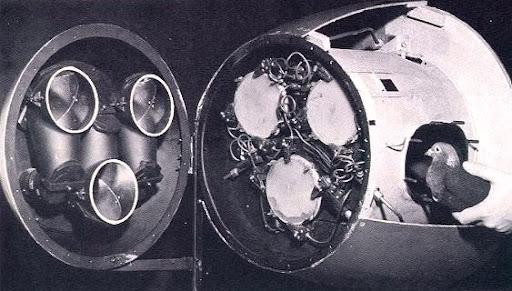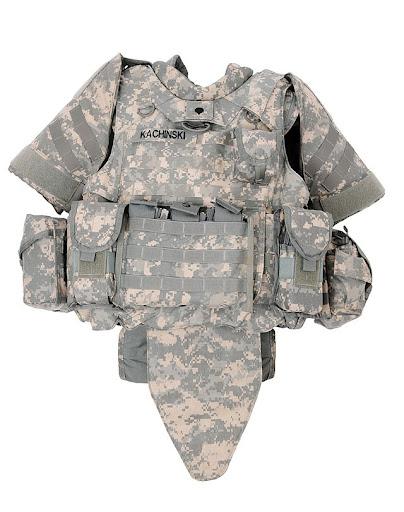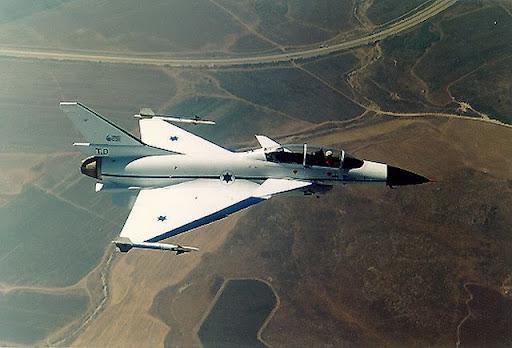The history of military R&D has been both comic and tragic. And unsurprisingly, in the 21st century the world’s military budgets continue to soar.
◊
Senator William Proxmire was appalled. Already an 18-year veteran in Washington, the Democrat from Wisconsin had long been preaching to the Senate floor about waste, specifically the waste of taxpayer money: “Move over, $7,000 coffee pots! Stand aside, $400 dinners! We now have the $792 doormat!.” However, it seemed like none of his constituents were listening. So, he came up with an idea to get their attention: the Golden Fleece Award.
Given out monthly by Proxmire for profligate waste of taxpayer money, the award was immensely popular with the American public, and it showed a whole generation of voters just how easily the government could blow millions of dollars. The first government-funded program to receive the not-so prestigious honor was a 1975 National Science Foundation study on love that cost $424,000. The awards often targeted egregiously expensive military programs. And, despite the protests of Proxmire and others, the sums spent on military research and development (R&D) remain staggering even today.
While the Golden Fleece Award was an American invention, wasting money on mind-bogglingly expensive war machines is not. The list of countries with canceled military projects is as long as the list of countries with a military. Military spending is undoubtedly necessary for many legitimate purposes. After all, mechanics need parts for the equipment they repair, soldiers need to eat and to receive their pensions when they retire, and development doesn’t come on the cheap.
But military R&D can also be a great way to flush billions down a rhetorical toilet, a breeding ground for inane ideas. Among the cheaper but still ridiculous proposals there are amusing gems that come with smaller price tags than the most notable examples, but they still leave you wondering who thought they were viable in the first place.
Guns that Couldn’t Shoot Straight and Other Inane Ideas
The Germans during World War II invented a gun that would be able to shoot around corners, the Krummlauf. Its secret: a curved barrel. This didn’t quite work, with the prototypes quickly suffering extreme wear, surprising absolutely no one. Also from those crazy Nazi R&D guys, the massive Windkanone (wind cannon) was built after tests suggested it could knock low flying planes out of the air. A single such weapon was constructed and installed in Germany in 1945, with absolutely no actual results to show before the end of the war.
Check out Nazi War Machines on MagellanTV.
Slightly more impressive than guns that shoot air or fail to shoot around corners were the gyrojet weapons of the 1960s. This family of firearms (a pistol and carbine were constructed, with plans for a light machine gun) relied on self-propelling projectiles; essentially miniaturized rockets. These cartridges had some benefits, namely that the guns themselves could be lightened without the need to reinforce barrels and other components against the force of a gunpowder cartridge. The projectiles also created very little recoil as a result of leaving the barrel with less force. However, this lack of velocity in the first few feet of the projectile’s travel meant the close-quarters effectiveness of gyrojets was practically nil. Add to that the fact that each projectile could cost upwards of $100, and you start to see why these weapons were never adopted on a large scale.
The wacky ideas don’t just end at firearms that no one uses. In 1943, American psychologist and inventor B.F. Skinner concocted a novel plan to help American rockets reach targets in Nazi Germany: pigeon-controlled steering. The nose cone of the rocket would act as a cockpit for three pigeons, who had been trained to recognize the target site from the air. These pigeons would then peck at screens showing the ground below, in order to direct the payload right onto the recognizable target.
Believe it or not, this pigeon-directed kamikaze method actually worked in a test, but was deemed too far-fetched for widespread deployment. Still, the successful test seems to have left some wondering what else could be achieved by incorporating animals into warfare.

The ‘Pigeon Bomb’ with it’s three viewing screens. (Credit: Wikimedia Commons)
How does one take it a step further from pigeons in missiles? Chickens in nukes, of course! During the Cold War, the British were looking to protect themselves from the USSR’s feared expansion into Western Europe. A most excessive plan was, well, hatched: bury a seven-ton nuclear warhead in East Germany, with plans to detonate it if the situation becomes desperate enough.
However, this “Blue Peacock” warhead couldn’t operate properly when buried in the frozen dirt created by the Eastern European winter, and needed to be warmed. Enter: the chickens. The plan was to build a sort of enclosure around the warhead filled with these chickens, who were given water, food, and oxygen for a week or so. The chickens’ body heat would keep the nuclear mine warm enough to function, and the chickens would die for their country should the worst happen. Thankfully for Germany, Russia, and the chickens, the plan was scrapped due to concerns over the nuclear fallout that would be produced, which is a good thing as accidental detonations have happened before in similarly harebrained schemes.
Camouflage Pattern Couldn’t Hide a Clear and Present Waste of Money
Rocket guns and nuclear chickens are amusing, but the modern military tends to skew toward prototypes that are more conventional, and much more expensive, than training a squadron of ill-fated pigeons.
One infamous expenditure in recent military history is the U.S. Army’s Universal Camouflage Pattern (UCP), commonly referred to as “digi-camo” because of its pixelated appearance. The UCP came about from a desire to streamline the production of the Army’s camouflage gear by creating a pattern that was suitable for both forest and desert climates found in the Middle East.

Modern military gear adorned in UCP. (Credit: Wikimedia Commons)
After development was completed in 2005, the digi-camo was deployed in the field and quickly became the subject of much derision from the soldiers using it. The problems with the design stemmed largely from its inability to appear natural against most backgrounds (you know, the one thing camouflage is supposed to do). The pixelation was incorrectly sized, with the larger blocks coming together to create an effect known as isoluminance, a fancy word for the brain’s interpretation of a pattern or mass of colors as a single object. This means the UCP actually made soldiers more visible in some situations.
Another issue was the overall color scheme of the camo. It lacked any black in the pattern, which, when used properly, gives the impression of depth within the camouflage, making it appear more three-dimensional. The absence of dark color also means the camo doesn’t do as well as other patterns when in shadows, which one would think is an important factor to consider in a uniform that would have to function outdoors.
The UCP was already being phased out in 2010, but not until the Army had spent a total of $5 billion on development and manufacturing for the original design. Somehow, none of this budget was set aside for testing and surveying with the camo in the field, as the UCP was deployed seemingly based on faith alone.
Israel’s Lavi Fighter: Expenses Fly Higher and Higher
In contrast to the waste of billions in the rushed deployment of the UCP, some prototypes cost so much because development moves slowly, with every detail considered and tested. Take the Lavi, Israel’s prototype fighter jet which began development several years before the official announcement of the program in 1979. Developed by Israel Aircraft Industries, the Lavi’s initial estimated development cost was $750 million, with an additional $7 million per unit in production costs. It was to feature capabilities similar to the U.S. Air Force's F-16.

The IAI Lavi in flight over Israel. (Credit: Wikimedia Commons)
Development of the Lavi got off to a good start. Its engine was made more powerful to allow for greater speed and maneuverability while still being able to handle the weight of attached armaments. The Lavi was smaller than the F-16, permitting tighter turns, and it incorporated advanced electronic countermeasures that rivaled its counterpart.
Despite these promising signs, several factors worked simultaneously against the Lavi program. Israel’s original plan to recoup some development costs by selling the plane to other countries was shot down by the U.S., which wasn’t thrilled about competition with the F-16 on the international arms market.
Another major problem was the mounting costs per plane, forcing Israel to scale back its original goal of producing 300 Lavis. And, the resulting reduction of orders for components pushed the unit cost still higher, with 150 planes costing 55 percent more than they would if the original 300 were ordered. To make matters worse, the development cost estimate had doubled to $1.5 billion.
In 1987, the Israeli government’s cabinet voted on whether to continue the Lavi program. The result was shockingly close: 12-11 in favor of terminating, with one cabinet member abstaining. Thus the Lavi met an early end, and, perhaps adding insult to injury, Israel instead bought 90 American F-16s shortly thereafter.
The Future of Defense Spending
The future of warfare (as far as we can see) is full of ideas that seem right out of a 1980s sci-fi movie. For instance, several “advanced” nations, most notably China, are currently conducting research into super-soldier programs. Enhanced humans would be able to communicate directly with machines, have bionic components implanted in their bodies, and have their genes edited to become more capable and resilient.
It’s not just the Chinese military that is looking into genetically enhancing humans. Other nations such as France have already publicly acknowledged the possibility that a new kind of soldier could become prevalent. And Russian President Vladimir Putin put it in chilling terms in 2017: ‘One may imagine that a man can create a man with some given characteristics, not only theoretically but also practically. He can be a genius mathematician, a brilliant musician or a soldier, a man who can fight without fear, compassion, regret, or pain.’
The spending on military-related genetic research is hard to verify, as is the depth of many countries' involvement. But with the U.S. Department of Defense spending $100 million on genetic testing for mosquitoes, and the costs of nanomachine and bionic research reaching impressive levels, one can imagine the expense to the taxpayer would hardly be cheap.
In fact, one doesn’t need to imagine it at all – just read a headline. Iran has plans to make defense a priority and cut oil production, looking to spend just over $5 billion on defense in its 2022 budget. Japan approved a record high defense budget of $6.7 billion for the upcoming year, the first time the government has ever spent more than one percent of its GDP in that area. Saudi Arabia intends to make a massive jump in spending, with plans to funnel $46 billion into defense, a 10 percent rise from the previous year. And last but definitely not least, the United States has approved its budget for the upcoming year: the paltry sum of $768 billion.
While William Proxmire is no longer alive to call out the waste in Washington, his message of accountability for the spending of taxpayer dollars – not only in the U.S. but in other countries as well – holds just as much relevance today as it did in the 1970s. As national budgets continue to skyrocket, the citizens of these countries face problems that can’t be solved by a shiny new fighter jet.
Ω
Wallace Burgess is a Contributing Writer for MagellanTV. He is a graduate of Syracuse University (go Orange!) where he earned B.A. in Writing and Rhetoric and Sociology. He lives in New York City and enjoys playing poker and video games.
Title Image Credit: Peng Chen via Wikimedia Commons


